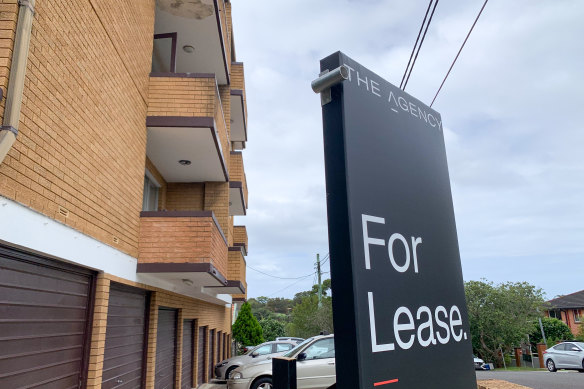By Jim Malo
Rents across the country have flat-lined over the past two months, new figures show, which could be an early indication that the rental crisis is easing.
Rents were still quickly growing year-on-year and landlords were still asking for more money than before the pandemic, however. Experts say affordability is still stretched, and would be until wage growth made up for massive rent hikes recorded post-lockdowns.
The CoreLogic national rental index recorded 0 per cent growth over July and August, the least since the index fell 0.2 per cent in July 2020. The index is an estimation of all rents being paid across the country, rather than a typical median, which is derived from asking rents over a certain period.
Sydney rents inched 0.3 per cent lower in the three months to August, while Melbourne rose just 0.8 per cent, its weakest August quarter in four years. Brisbane (up 0.1 per cent) and Perth (up 0.7 per cent) also had their weakest growth over the same period for four years.
CoreLogic research director Tim Lawless said it was too soon to say if the flat figures were due to a seasonal effect during the typically quieter winter months, or indicated the rental market could be heading for a turnaround.
“Rental growth is easing, but from a very high level,” he said. “We’re moving into a new phase of rental growth that will be more sustainable, but it may also see some downwards growth if the trend continues.”
The annual rate of growth was still high at 7.2 per cent, but was down from its November 2021 peak of 9.7 per cent. Unit rent growth had slowed the most, Lawless said, and the rate of growth of apartment rents had more than halved in the three biggest east coast cities.
“The slowdown we’re seeing in rental growth is evident pretty much everywhere,” he said. “This is a broad-based phenomenon, but the slowdown seems to be more apparent in the large cities, Sydney, Melbourne and Brisbane, in the unit sector.”
Lawless said rents for detached houses in city fringe areas were still growing strongly. “This reflects the affordability challenges, which might be pushing people to find accommodation further from amenities, further from their work and potentially further from where their families are.”
SQM Research founder Louis Christopher said his data also showed advertised rents were flat over the past 30 days too. “The data’s definitely telling us the rental market is slowing. Conditions are still tight, but we’re past the worst of the rental crisis.

Experts say it was hard to say when renting would be affordable again. Credit: Peter Rae
“I wouldn’t go so far to say we’re out of the rental crisis, I wouldn’t say that.”
Christopher said many renters would not yet be able to feel the benefits of a weaker market; few market segments had seen rents and vacancy rates ease.
“There will be more choices available in a number of areas, not everywhere,” he said. “We’re noticing a pick-up in vacancies in areas around universities. It indicates Labor’s approach of trying to cut [the number of] international students is working.”
Falling demand was contributing to rents easing, both economists said, but tenants were stretched in the cost-of-living crisis and had reached a limit of what they could afford to pay, Lawless said.
“We’re seeing households dedicating about 32 per cent of their income to paying rent, which is a record high,” he said. “Once renters are paying this much of their income to rent, it’s hard for that to go higher.
“Affordability is driving a restructure in rental demand … We’ve seen larger households reforming. It probably also drives things like younger folks staying at home with their parents for longer. And there’s also the increasing levels of homelessness.”
Director of tenants’ advocacy group Better Renting, Joel Dignam, said tenants would still struggle, given rents were still much more expensive than they were before the pandemic began.
“The lower rate of rent increases is still putting people under pressure,” he said. “There is a bit more breathing space out there, and it is imaginable you can get a new rental for about what you’re paying, and you might not get a 20 per cent increase.”
Dignam said it was unlikely that the crisis would abate until wage growth had caught up with the growth in rents over the pandemic period.
Lawless agreed. “The crisis is far from over, in that we’re not expecting rents to start falling precipitously from here. It’s going to take a long time for rental affordability to repair.
“You need household incomes to grow, or you need to see rents fall, and I don’t think either of those things is going to happen overnight.”